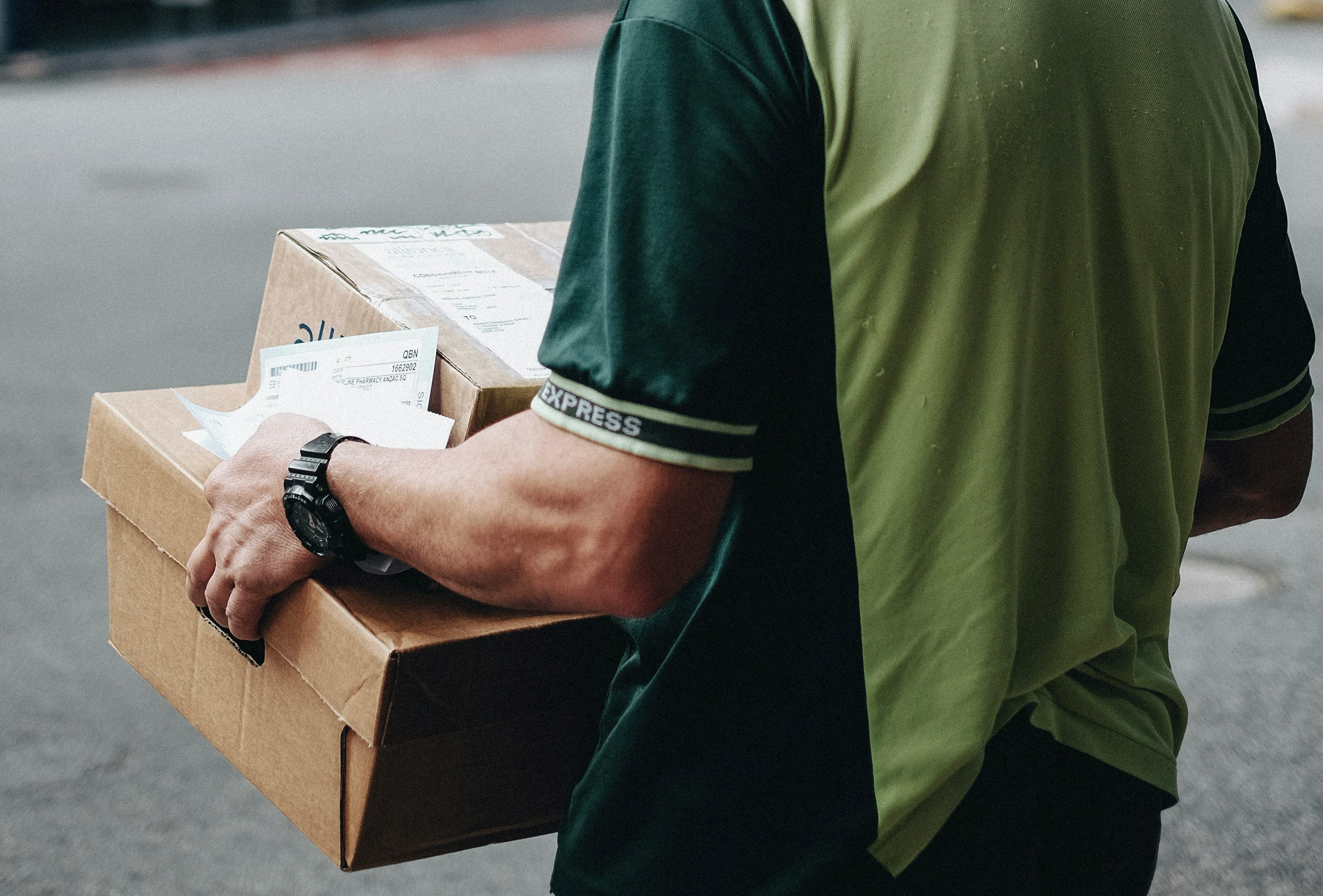
In the bustling landscape of the digital age, a fail-safe tracking system for last mile carriers isn't a luxury, but a necessity. It's about equipping customers with real-time knowledge of their shipment's journey, empowering them to plan for its arrival. For businesses, it's about pinpointing and addressing any bottlenecks along the delivery route to ensure timely deliveries at minimal cost. By deploying a top-tier last mile carrier tracking system, businesses can not only slash costs but also ensure their customers are delighted with the end-to-end shipping process.
What is last-mile carrier tracking?
Last mile carrier tracking is a cutting-edge service that enables customers to monitor the location and status of their package during the delivery's home stretch, from the distribution center to the final delivery destination.
This service showers customers with real-time updates on their package's delivery status, including the anticipated delivery date and time, as well as any potential hiccups or hold-ups.
Why is Last Mile Delivery Tracking a Game-Changer?
1. Transparency: Last mile delivery tracking showers customers with real-time updates on their package's status, including the location, anticipated delivery time, and any potential hiccups. This transparency fosters trust and assurance in the delivery process.
2. Customer satisfaction: By showering customers with precise and timely information about their delivery, last mile delivery tracking can skyrocket customer satisfaction. Customers appreciate the ability to track their package and know when it will land, which can ease anxiety and frustration.
3. Supercharged delivery efficiency: Last mile delivery tracking can supercharge delivery efficiency by feeding drivers with real-time updates on traffic conditions and route adjustments. This intel can help drivers to reroute and reschedule, which can boost on-time delivery rates and trim delivery times.
4. Stellar inventory management: Last mile delivery tracking can also aid businesses to manage their inventory like a pro by feeding them with real-time intel on delivery times and locations. This intel can help businesses to fine-tune their inventory levels and minimize the risk of stockouts.
What is a last mile tracking number?
A last mile tracking number, also known as a final mile tracking number or delivery confirmation number, is a unique identifier given to a package or shipment to track its movement from the transportation hub to the final delivery destination.
The "last mile" in logistics refers to the delivery process's final stage, where the package is shuttled from a local distribution center to the recipient's address. The last mile tracking number is used to oversee the package's progress during this critical stage, ensuring that it lands at its destination on time and in pristine condition.
Typically, last mile tracking numbers are provided by the carrier or shipping company and can be used by the recipient to track the package's status through online portals or mobile apps. This allows the recipient to stay in the loop about the estimated delivery time and date and make any necessary arrangements to receive the package.
How to track last mile carrier?
Tracking a last mile carrier typically involves leveraging the tracking information provided by the shipping company. Here are the general steps to track a last mile carrier:
1. Secure the tracking number: The tracking number is typically provided by the shipping company or the online retailer from whom you made the purchase. If you don't have the tracking number, reach out to the retailer or shipping company to secure it.
2. Navigate to the carrier's website: Once you have the tracking number, head to the website of the carrier responsible for the final delivery. For instance, if you ordered something from Amazon and it is being delivered by USPS, head to the USPS website.
3. Enter the tracking number: Look for the option to track a package on the carrier's website and input the tracking number provided to you.
4. Track the package: Once you have input the tracking number, you should be able to see the current status and location of your package. This may include information about when the package was picked up, when it landed at the local distribution center, and when it is expected to be delivered to your address.
5. Reach out to the carrier: If you have any questions or concerns about your package's delivery, you can reach out to the carrier directly using the contact information provided on their website.
Bear in mind that the tracking information may not be updated in real-time and there may be delays or issues outside of the carrier's control. If you have any concerns about your package's delivery, it's best to reach out to the carrier directly for more information.
Challenges in Last Mile Carrier Tracking
While last mile delivery tracking can provide a plethora of benefits, there are also several challenges that need to be tackled. Some of the key challenges in last mile delivery tracking include:
1. Limited visibility: One of the biggest challenges in last mile delivery tracking is the limited visibility of delivery routes and traffic conditions. This can make it tough to accurately predict delivery times and ensure on-time delivery.
2. Communication issues: Communication issues between delivery drivers and dispatchers can also create challenges in last mile delivery tracking. If drivers do not have access to real-time updates or if there are communication breakdowns, this can lead to delays or other issues.
3. Technical issues: Last mile delivery tracking systems can be prone to technical issues, such as network outages or software glitches. These issues can prevent delivery companies from accessing real-time data and can lead to delays or inaccurate delivery estimates.
4. Security concerns: There are also security concerns associated with last mile delivery tracking. Customer data and other sensitive information must be shielded from cyber attacks and other security threats.
5. Cost: Deploying last mile delivery tracking systems can be costly, especially for smaller businesses that may not have the resources to invest in the necessary technology and infrastructure.
6. Customer expectations: Finally, customer expectations can be a challenge in last mile delivery tracking. Customers may expect real-time updates and may be dissatisfied if they do not receive accurate intel about their deliveries.
Solutions for Last Mile Delivery Tracking
1. GPS tracking: The use of GPS technology can provide real-time tracking of delivery vehicles and packages. This allows delivery companies to monitor their fleet, optimize routes, and provide accurate delivery estimates to customers.
2. Mobile applications: Mobile applications can be used to provide drivers with real-time updates on traffic and route changes. This helps them to make adjustments to their routes and schedules, which can boost on-time delivery rates.
3. Improved communication: Effective communication between drivers and dispatchers is critical for last mile delivery tracking. Delivery companies can invest in technology that provides two-way communication between drivers and dispatchers, such as instant messaging and voice calls.
4. Cloud-based software: Cloud-based software can provide delivery companies with a centralized platform for managing their operations, including last mile delivery tracking. This can help to streamline operations, trim costs, and boost efficiency.
5. Smart lockers: Smart lockers can provide an alternative delivery option for customers who are not available to receive their packages in person. These lockers can be placed in convenient locations and can be accessed using a code or mobile application.
6. Blockchain technology: Blockchain technology can be used to provide a secure and transparent platform for last mile delivery tracking. This technology can help to prevent fraud, increase transparency, and minimize the risk of security breaches.
Benefits of Last Mile Tracking
1. Improved customer experience: Last mile tracking allows customers to track their packages in real-time, providing them with greater visibility and control over their deliveries. This can help to improve customer satisfaction and loyalty.
2. Increased efficiency: Delivery companies can use last mile tracking to optimize their delivery routes and schedules, reducing the time and costs associated with last mile delivery.
3. Reduced delivery errors: Last mile tracking can help to reduce the risk of delivery errors, such as missed deliveries or package theft. This can help to improve the overall reliability of the delivery service.
4. Improved resource utilization: By tracking their vehicles and packages in real-time, delivery companies can better utilize their resources and reduce inefficiencies. This can help to lower operational costs and increase profitability.
5. Enhanced supply chain visibility: Last mile tracking can provide delivery companies with greater visibility into their supply chain, helping them to identify and address any potential issues or bottlenecks.
6. Better decision-making: With access to real-time data, delivery companies can make more informed decisions about their operations. This can help to improve the efficiency and effectiveness of their delivery service.
Examples of Successful Last Mile Carrier Tracking
1. Amazon: Amazon has been a pioneer in last mile delivery tracking, providing customers with real-time updates on their package's location and delivery status. The company has also invested in advanced technologies, such as drones and robots, to enhance its last mile delivery capabilities.
2. UPS: UPS offers a service called UPS My Choice, which provides customers with detailed tracking information and the ability to customize their delivery preferences. This service has been praised for its user-friendly interface and accurate delivery estimates.
3. DHL: DHL offers a range of tracking options for customers, including real-time tracking, SMS notifications, and the ability to reschedule or reroute packages. The company has also invested in digital technologies, such as artificial intelligence and machine learning, to enhance its delivery tracking capabilities.
Why Invest in Last Mile Carrier Tracking?
Investing in last mile carrier tracking can provide a host of benefits for businesses, including improved customer satisfaction, increased efficiency, and enhanced supply chain visibility. By providing customers with real-time updates on their deliveries, businesses can foster trust and loyalty, leading to increased repeat purchases and higher customer lifetime value. Furthermore, by optimizing their delivery routes and schedules, businesses can reduce their operational costs and increase their profitability. Finally, by gaining greater visibility into their supply chain, businesses can identify and address any potential issues or bottlenecks, helping to ensure a smooth and efficient delivery process.
In conclusion, last mile carrier tracking is a crucial component of the modern delivery process. By investing in this technology, businesses can enhance their delivery service, delight their customers, and drive their bottom line. So, gear up and embrace this digital imperative to stay ahead in today's competitive business landscape.









